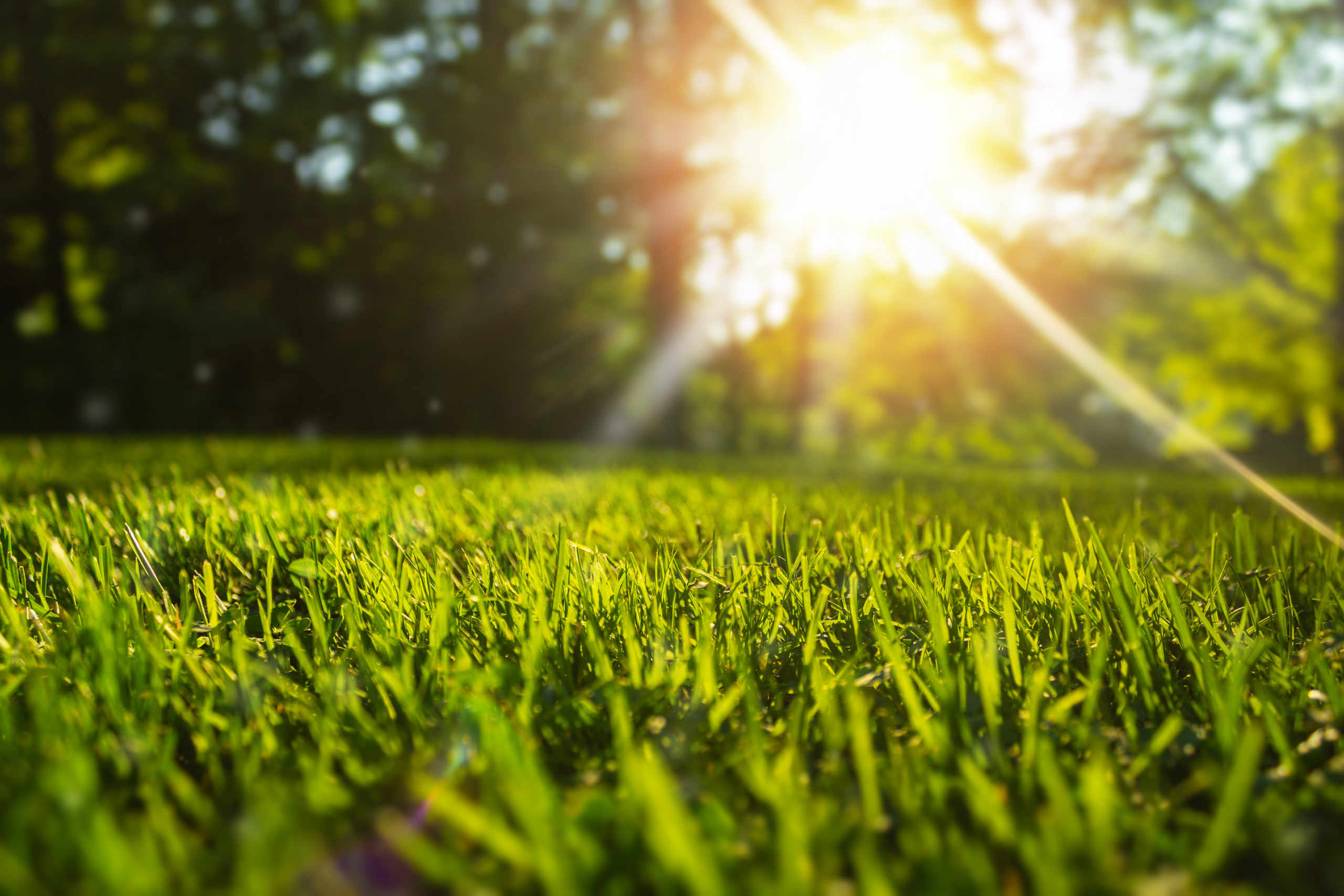How to Keep Grass Green
editGroundskeepers everywhere know that keeping grass green is a priority. Not only does it display beauty and leave a strong impression in the minds of your customers, but green grass is also a sign of good lawn health and proper care. However, as the summer gets hotter and drier, keeping your grass green can quickly become a chore.
In the latest blog post from Kenney Machinery, we’ll share some tips that can help keep your lawn green and stay healthy during the hottest months of the year.
Water Appropriately
Watering effectively is the most important tip on our list of how to keep grass green. For maximum results, you should create a watering schedule and stick to it if you want a healthy lawn. It’s good practice to deeply water your grass once per week. This allows the roots of the grass to grow deeper and provides greater access to water than if you were to frequently water in small amounts.
Ideally, try to water your grass in the morning before the summer sun makes it too hot outside. This prevents the water from evaporating, as well as gives it time to dry before the cooler temperatures move in at night.
Just as important as watering your grass, however, is being sure to not overwater it. Overwatering can restrict your grass from accessing oxygen, as well as make grass blades prone to damage and disease from insects.
Mow Properly
It’s important to find the sweet spot when mowing your grounds. Leaving your grass too high allows your grass to become a breeding ground for all kinds of insects, snakes, and rats. Cutting your grass too low, on the other hand, can weaken or even completely kill your grass, as it will restrict its access to water and other nutrients, which can leave you with brown grass spots.
As a general rule of thumb, you should aim to leave your grass around 2.5-3 inches after mowing. This is short enough to keep most insects away but long enough to ensure that your grass has proper access to water and nutrients.
In order to mow as effectively as possible, be sure to use mowers that you can count on to get the job done.
Eliminate Weeds
Weeds, just like grass and plants, need sunlight, water, and essential nutrients in order to grow. If there are any weeds in your grass, they’ll be competing with your healthy grass for space and the nutrients needed to survive. Eliminating weeds as quickly as possible will help to provide your grass with easier access to the necessary nutrients.
Reduce Foot Traffic
Occasional foot traffic likely won’t have a significant impact on your grass, as it is strong enough to undergo certain levels of stress. However, heavy foot traffic can damage the upper roots of the grass. Over time, significant foot traffic can cause thinning grass or even completely bare areas.
In order to reduce foot traffic, try not to have too many gatherings in the same area within a couple of weeks. Your grass will need time to recover from significant foot traffic, so be sure to provide it with the time that it needs if it’s recently experienced heavy stress.
Fertilize Twice Per Year
Ideally, try to fertilize your grass twice per year; once in the fall, and again in the spring. This will prevent over-fertilizing, which can weaken the roots of your grass. However, it is frequently enough to provide additional nutrients in order to grow lush green grass.
Contact Kenney Machinery for Turf Management Equipment
The team at Kenney Machinery is proud to provide customers with the turf management equipment they need to keep their grass green and lawn healthy all year long. For new, used, and rental turf management equipment that your grounds can depend on, be sure to contact Kenney Machinery. We’ll be happy to discuss your needs in detail in order to provide you with the best equipment for the job. Contact us today to get started.

